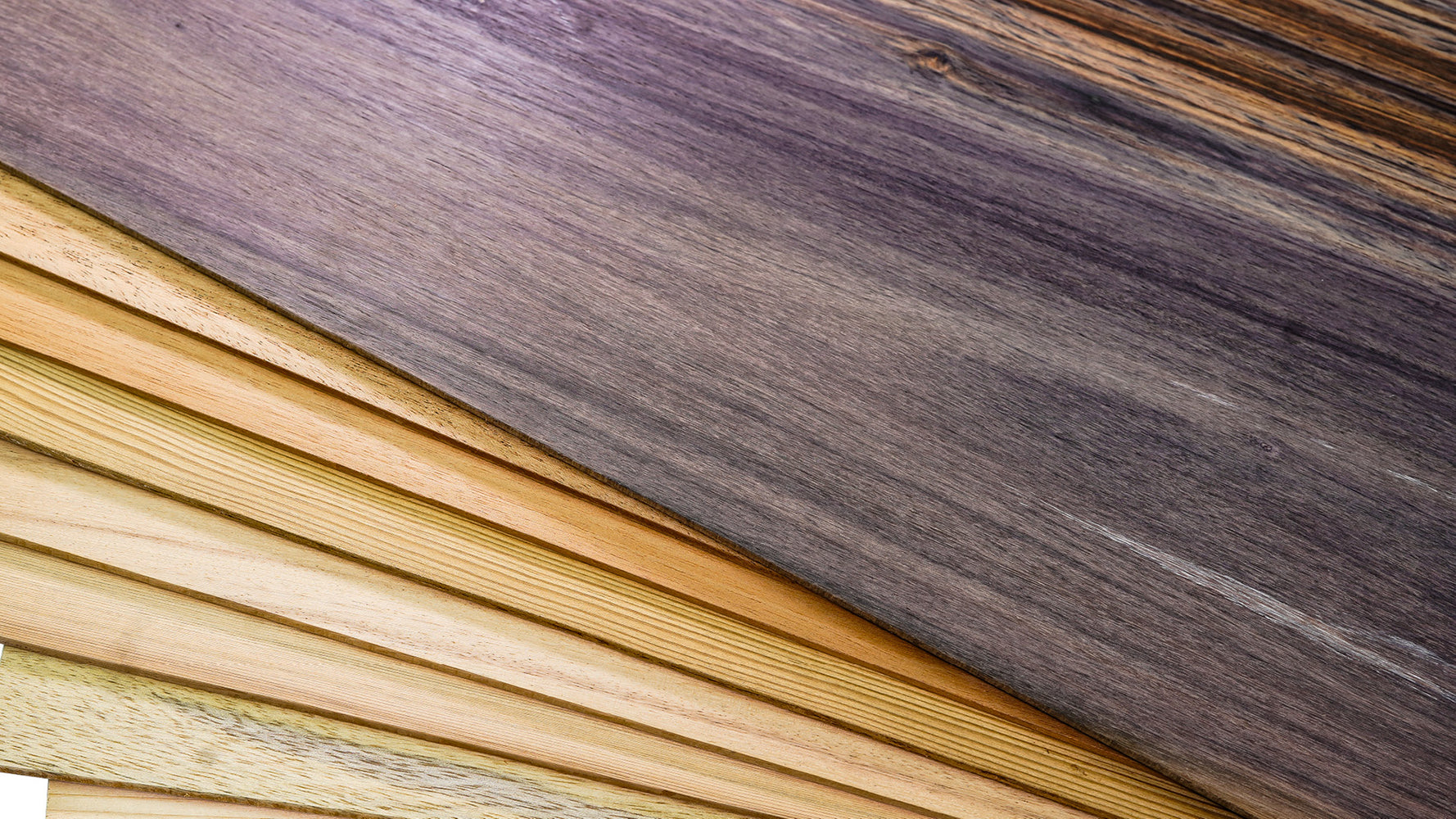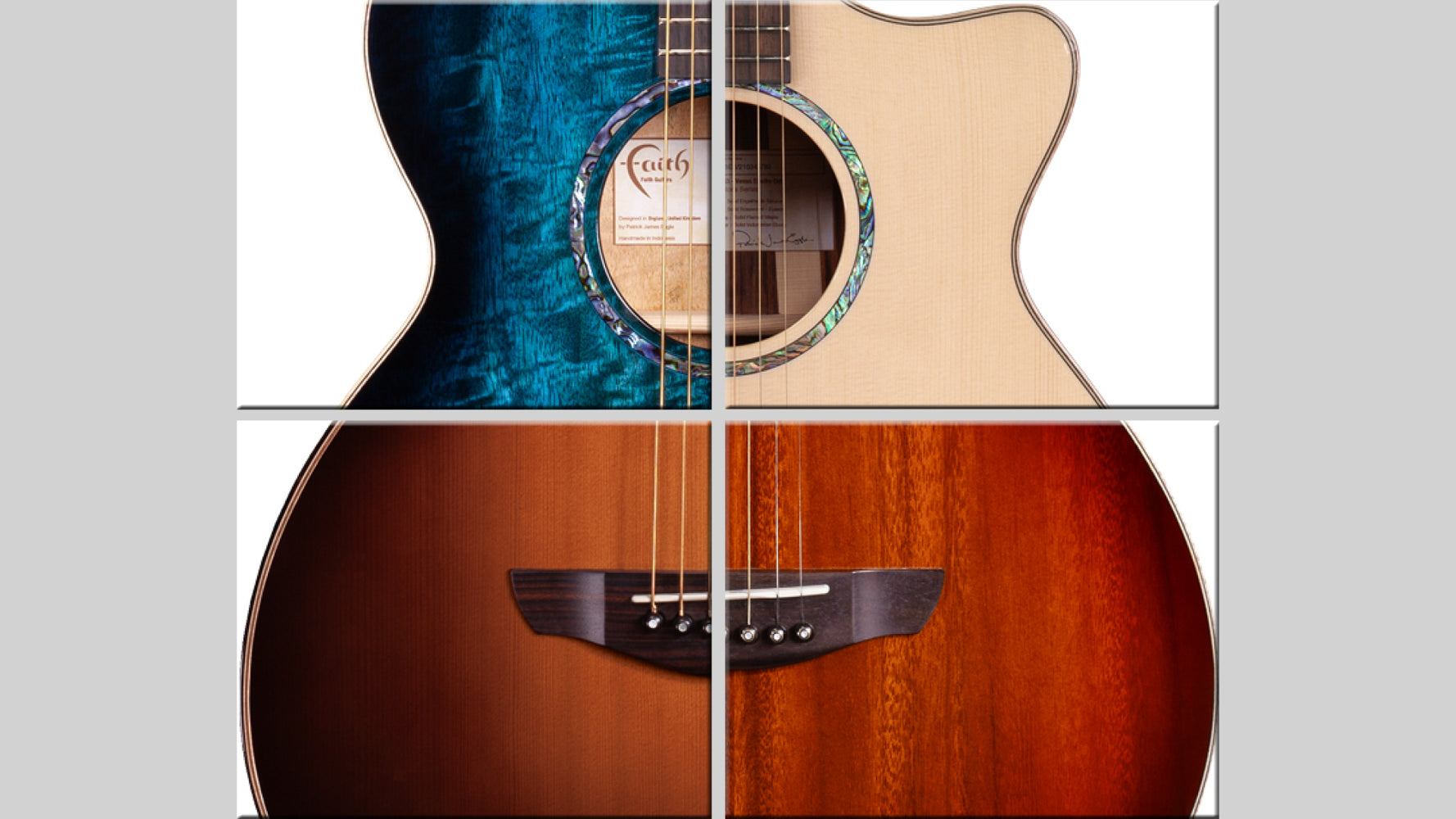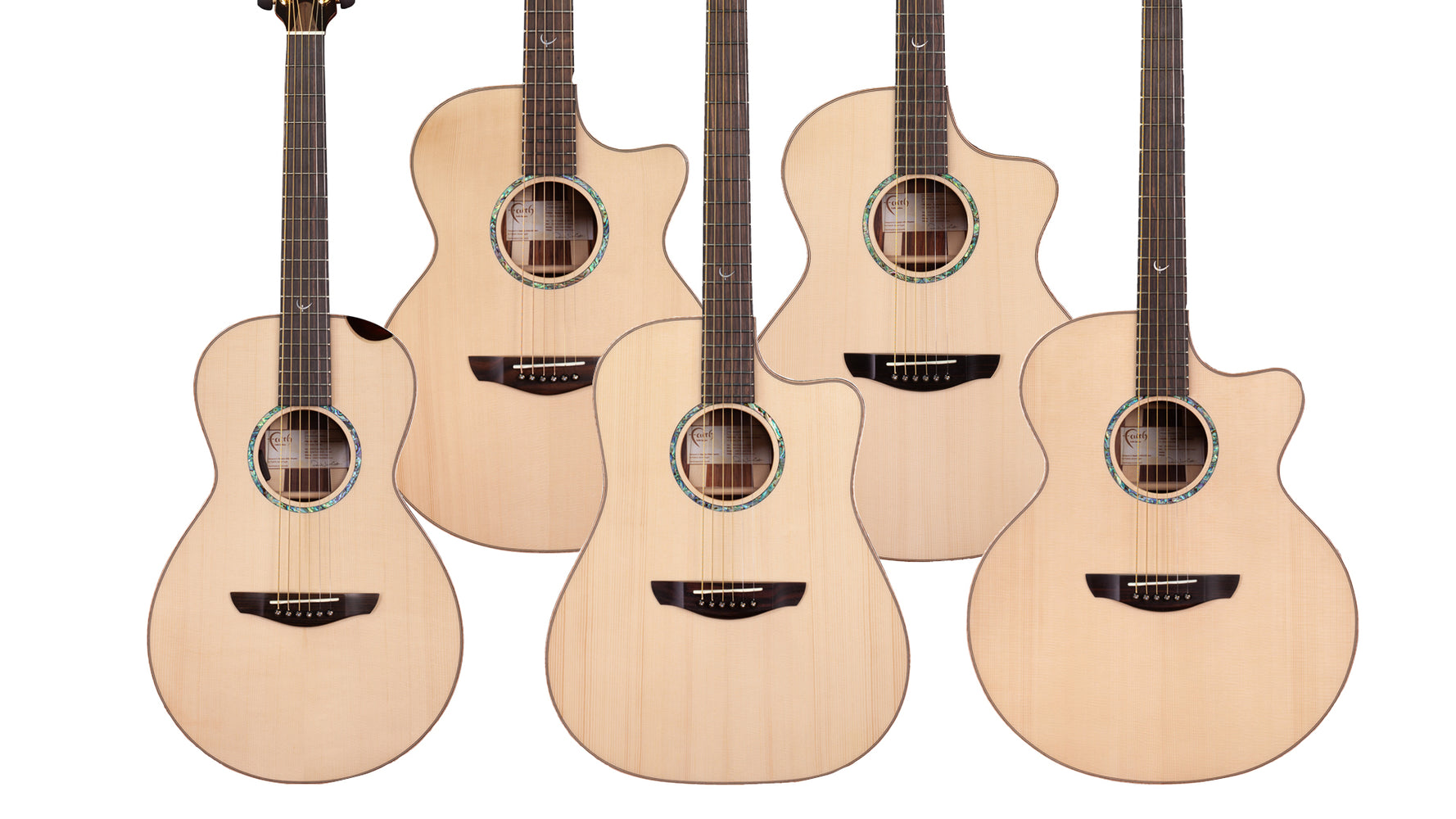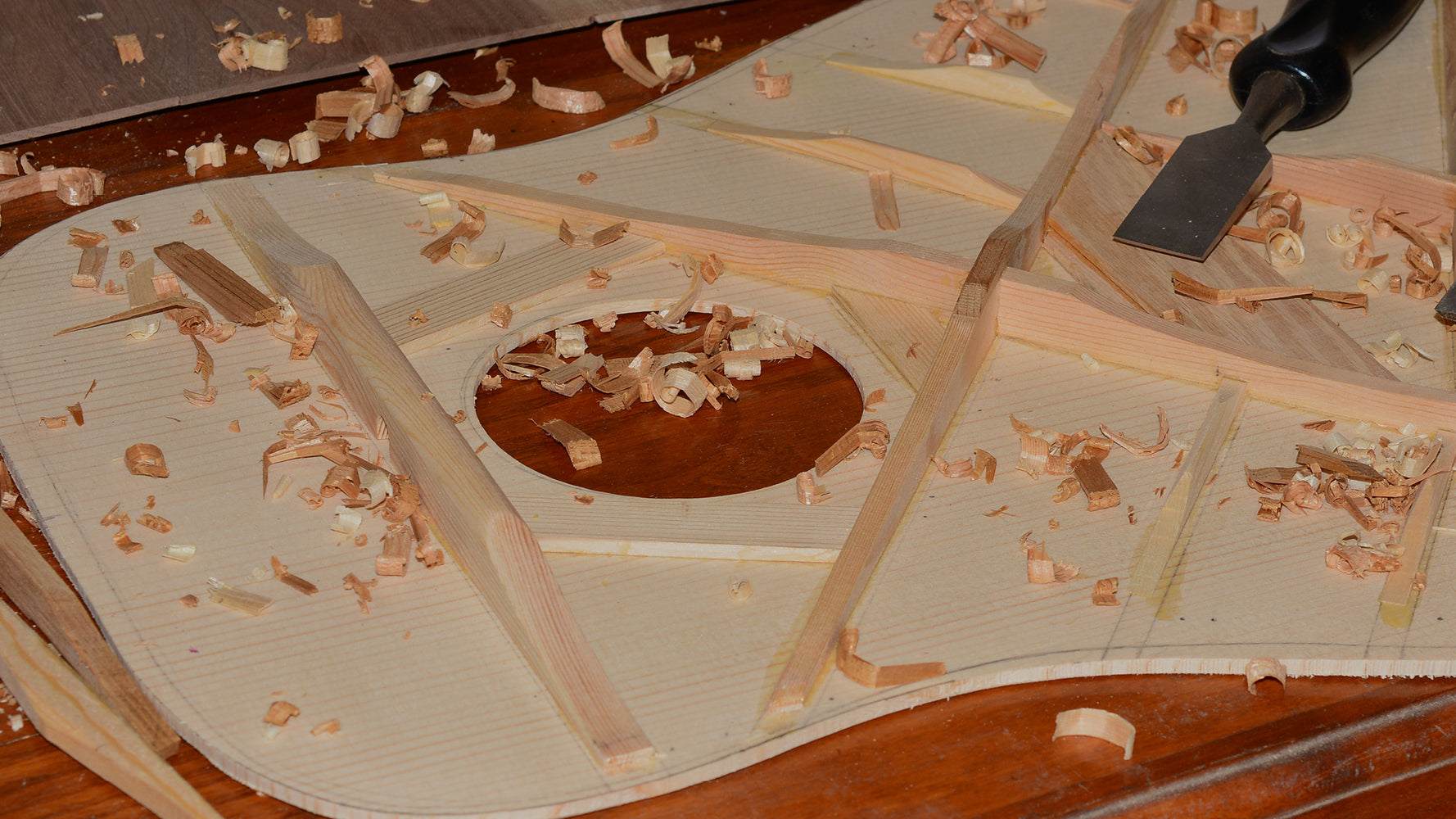Learn About Acoustic Guitar Tone
The sound of an acoustic guitar is shaped by several key factors, including the type of wood, body shape, bracing pattern, and strings. Spruce tops, like those on many Faith guitars, provide a bright, clear sound, while mahogany or cedar tops offer more warmth and mellowness. Larger bodies, like jumbos or dreadnoughts, produce louder, bass-heavy tones, while smaller bodies, such as auditorium or parlour shapes, deliver brighter, focused sounds. String type and gauge also play a role, with lighter strings producing slightly thinner sounds yet offerring more flexibility under the fingers, and heavier strings providing deeper, richer tones but with added finger pressure. Understanding all these elements and more will help you find the right guitar for you.

Solid Wood Sounds Better

Choosing your Tonewood

How Guitar Body Shapes affect Sound

What Difference does Guitar Bracing make?

The Neck Effect

Understanding Nuts and Saddles

How Finish and Aging affects a Guitar

Choosing the best Guitar Strings

